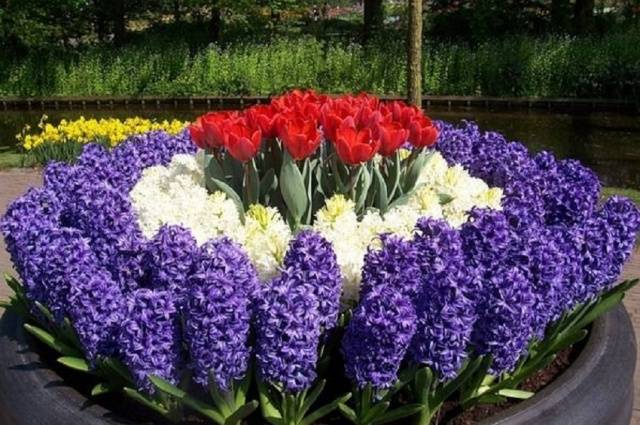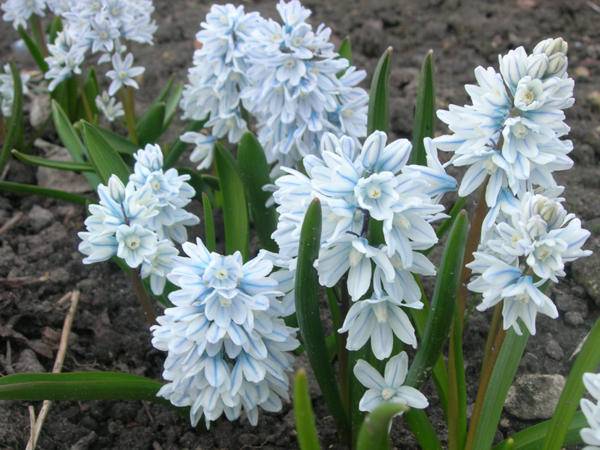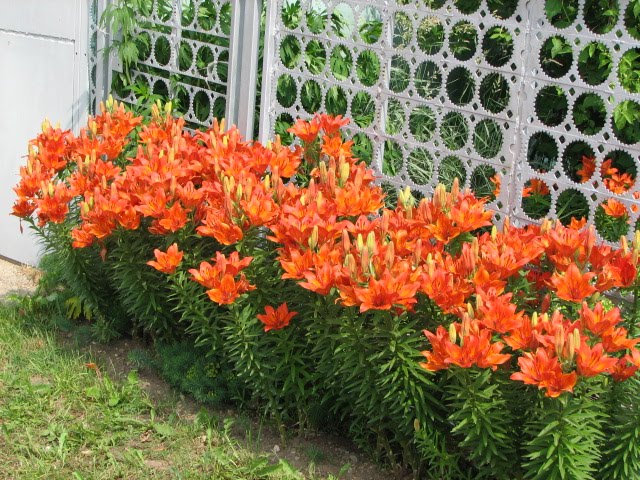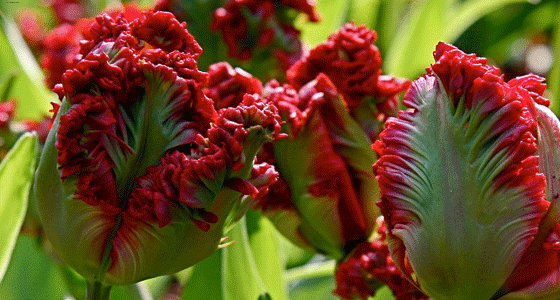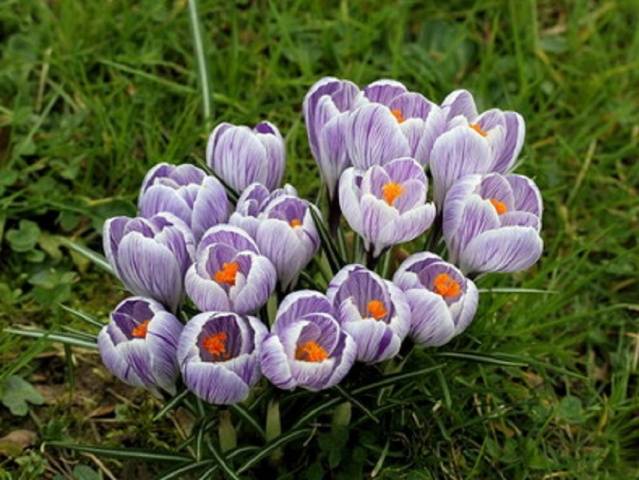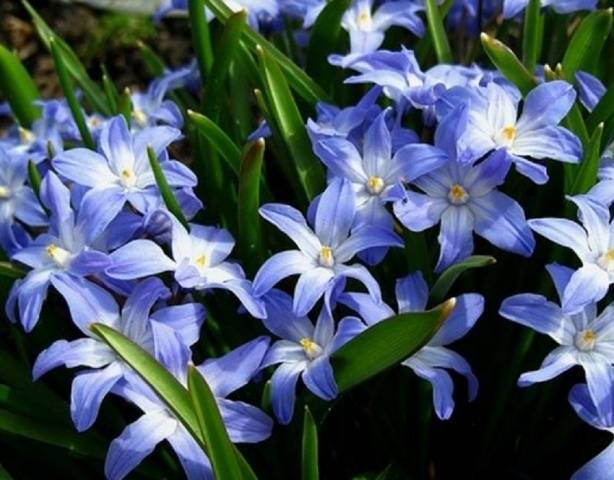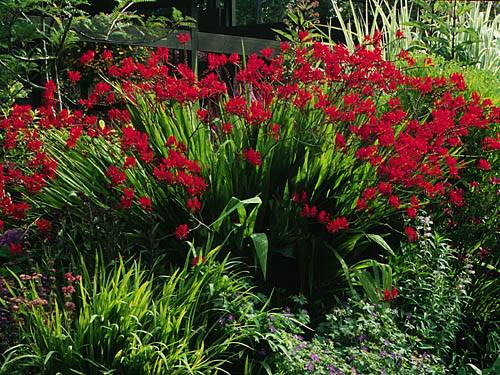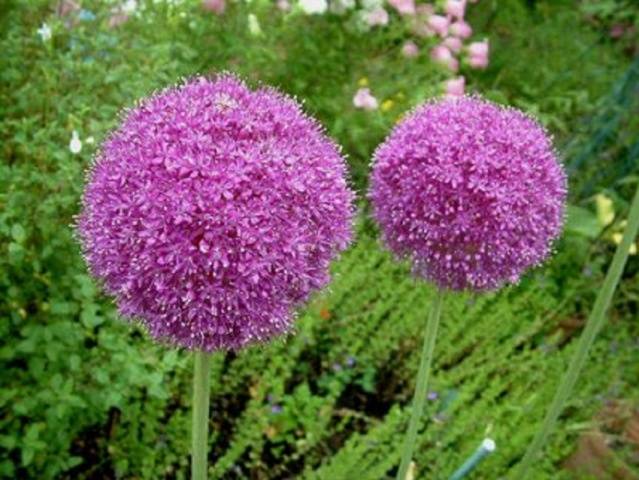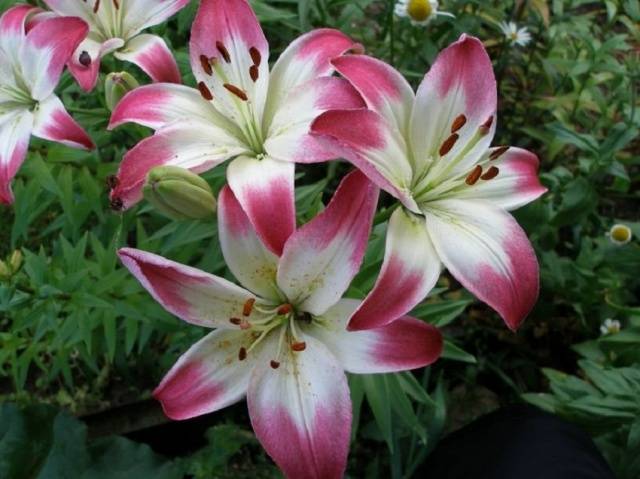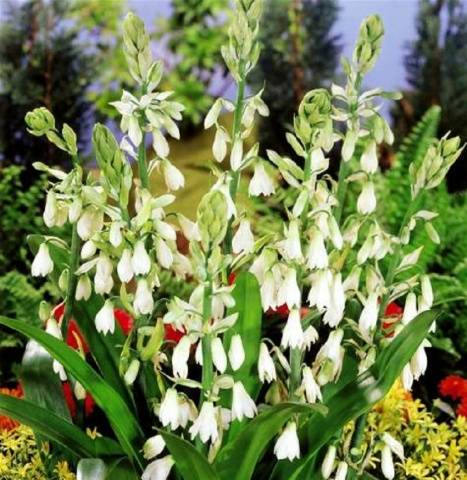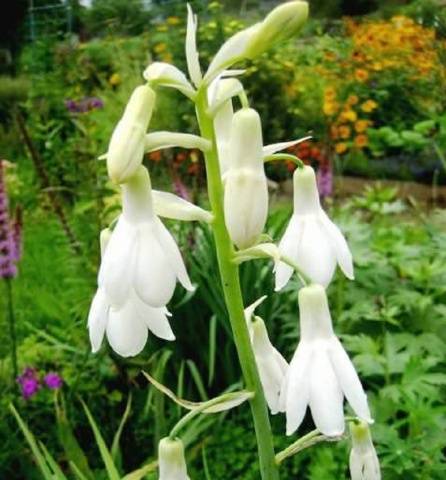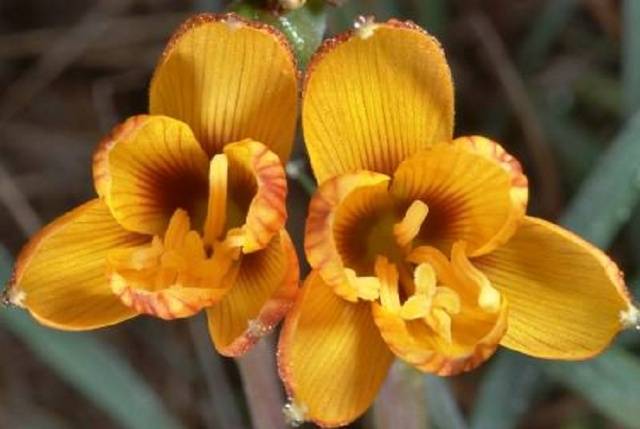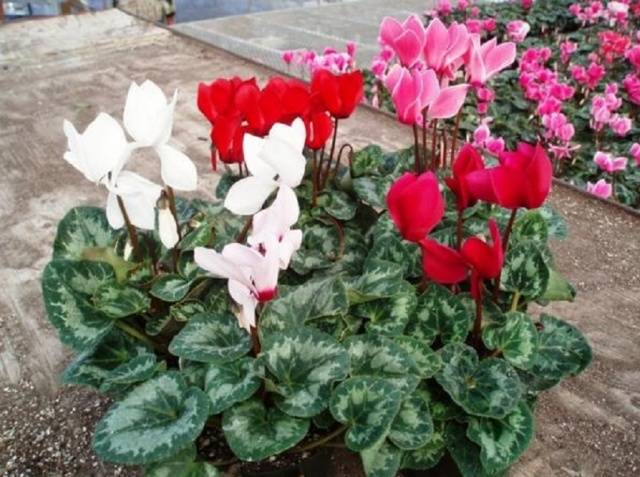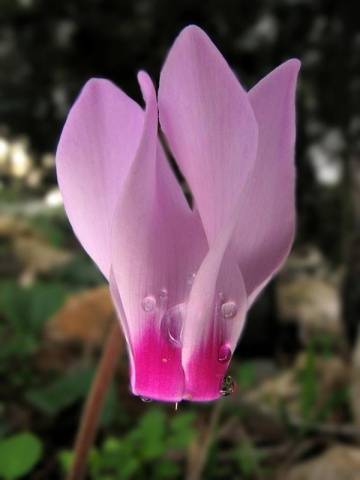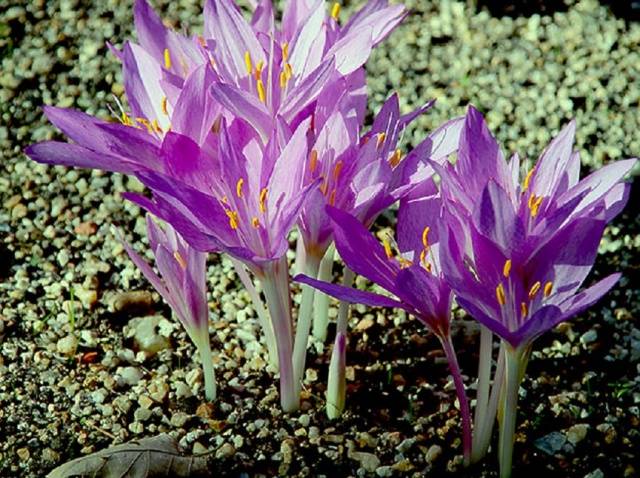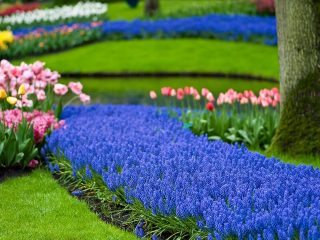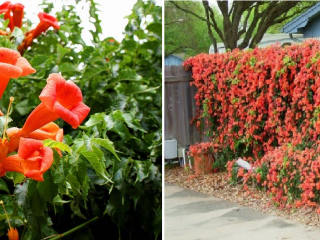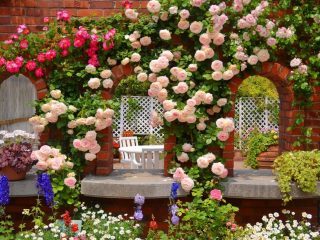Content
The species diversity of garden flowers amazes with its splendor. A separate group that always causes admiration are bulbous perennials.
These include bulbous primroses, pleasing to the eye in the first days of spring, plants with a summer or autumn flowering period. What they all have in common is the presence of an underground part - the bulb, which contains all the nutrients for flower growth. There are different types of bulbous perennials:
- bulbous;
- small-bulbous;
- corms.
All these plants are perennials and have different flowering periods, which allows you to create wonderful compositions of continuous flowering.
When do perennial bulbous bulbs bloom in the garden?
Bulbous perennials can decorate a garden plot throughout the season. To do this, you need to pay attention to the flowering time when choosing varieties. The main periods when bulbous flowers bloom are quite well known:
- Spring. The main representatives of early spring are primroses.These bulbous perennials bloom when the bulk of plants are just getting ready to awaken. Among them, it is worth noting scilla (scylla), crocus, snowdrop, muscari, and pushkinia. As soon as it gets a little warmer, it’s time for tulips, daffodils, hyacinths, and bulbous irises. These varieties bloom in late spring.
- Summer. Representatives of the summer flowering period have more fragrant and larger flowers. The color palette is much more varied than that of spring bulbs. Example – lilies. The choice can be made among varieties, ranging from white to bright crimson inflorescences. Then come daylilies, dahlias, gladioli, cannas, tigridia, callas, tuberoses, freesias, and poultry.
- Autumn. During this period, the beauty of bulbous plants is represented by garden cyclamen, colchicums, and crocuses with an autumn flowering period.
By correctly composing your landscape composition, you can enjoy the beauty of bulbous perennials all season long. To make the right choice, be sure to look at the photo of each species before placing the plant in the garden. It is necessary to take into account that bulbous perennials can act as a solo flower in a flower bed or, conversely, shade another plant.
Do I need to dig up bulbous plants for the winter?
Some species - yes, and some are distinguished by good frost resistance and are able to winter well in open ground. If the variety requires winter storage, then the bulbs must be dug up before the first frost. These are heat-loving bulbous perennials, which include gladioli, dahlias, callas, and cannas.If you do this with elite varieties of tulips (double, parrot), this will help preserve them longer. Digging up perennial bulbs is carried out after the leaves have withered.
Heat-loving bulbous perennials begin to be planted in the spring when the soil temperature is at least 12°C.
Daffodils, crocuses, common varieties of tulips, lilies, hazel grouse, and daylilies are considered winter-hardy bulbous perennials. In harsh or snowless winters, it is advisable to cover the planting areas of these flowers with mulch or spruce branches. Bulbs of winter-hardy varieties are planted at the end of September or October. The timing of frost must be taken into account. Planting is done 1.5 months before the expected date. This is necessary for the formation of the root system of the flower. Bulbs of those perennials that bloom in autumn are planted in late spring or early summer.
How to care for bulbous perennials
First of all, you have to remember that bulbous flowers prefer areas with good lighting, but they also tolerate a little shade. They like the soil loose and light; special requirements are placed on its air and water permeability. Any stagnation of water or constant dampness leads to disease and death of bulbous perennials. They should not be planted in heavy or poor sandy soils. The most suitable soil composition will be neutral nutrient soil.
Bulbous people love moderation in everything. This applies to watering and nutrition too.
The most whimsical Bulbous perennials include double daffodils, parrot tulips, some types of freesia, hyacinths and gladioli.
When there is high humidity or during rain, the inflorescences become filled with water. Then the stem may break, unable to withstand the weight of the flower. A strong wind leads to the same ending. Some summer residents tie up flowers.
Another problem of the listed species is their high demands on soils. If the soil does not satisfy the needs of the flower, then you will have to carefully select nutrient mixtures, fertilizers and top dressing to ensure that the result is worthy.
The best representatives of bulbous plants for the garden
Let's look at some types with descriptions and photos.
Early primroses
Spring bulbous perennials are very good on the site.
Crocuses
Small-flowered species bloom a little earlier, large-flowered ones later. Looks good in group plantings. They love light soil without stagnant moisture.
Chionodoxa
Appears from under the snow. These bulbous perennials are so beautiful that you will definitely want to grow them. It tolerates frost well and does not require shelter. Loves fertile soil. It is planted in places where the snow melts early so that the flowers appear earlier than other bulbous perennials.
Summer bulbous
Montbrecia
Considered a relative of irises. The second name is Japanese gladiolus. It grows quickly, replanting is required no more than once every five years. They bloom for a long time (up to 25 days) and beautifully; the petals can be yellow, orange or red. Does not like shading and stagnant water. Care does not differ from that usual for bulbous perennials.
Garden bows
They bloom in early and mid-summer. Among the varieties there are dwarf plants and giants.Unpretentious, but do not like damp, shaded places. It is better to plant in April; if autumn planting is needed, then at the end of September.
Lilies
The most common class of summer perennials. The colors of the flowers are so varied that just from lilies alone you can create an amazingly beautiful flower bed. Planting is preferable in autumn. When planting, add a little sand to the hole for drainage.
Therefore, purchase planting material before planting. Lilies are moisture-loving and respond well to fertilizing with mineral compounds. If you remove faded inflorescences in time, flowering will last longer.
Galtonia or African hyacinth
It blooms very profusely. The plant is tall, can reach 1 m in height, but is very showy. Loves the sun and windless places. This bulbous perennial prefers organic matter, preferably compost. Likes regular watering; bulbs are dug up for the winter. The photo shows a closer look at the galtonia flowers:
Gabranthus (Argentine lily)
Has an amazing ability. Flowers bloom after rain. Flower color can be white, yellow, pink. Planting is carried out in mid-spring, with the bulb protruding above the surface of the ground. Demanding about watering and fertilizing. It cannot withstand winter frosts, so the bulbs are dug up.
Varieties with autumn flowering
Garden cyclamen (Neapolitan)
A beautiful plant.
It grows well in nutritious soils, loves moisture, but does not tolerate waterlogging and stagnation of water. Requires partial shade and protection from draft and wind. It grows in one place for up to 10 years without transplanting. For the winter, plantings are covered, otherwise the plant may freeze.
Colchicum
Perennial with autumn flowering. Loves sunny places; in deep shade it can become prey for voracious slugs. The roots should be in well-drained soil so as not to rot if waterlogged. Although it grows in any soil, even clay. Planted in mid-August. Doesn't even require watering. The only exception is when the flowering period coincides with drought. Weed to ensure comfortable conditions for the plant. There are also species of colchicum that bloom in spring.
Conclusion
This is a small list of bulbous perennials that can decorate the garden throughout the season. The main advantage of these plants is the ability to grow in one place for a long time without replanting, which greatly facilitates the work of gardeners. And the beauty of bulbous plants will help you fall in love with them at first sight.
